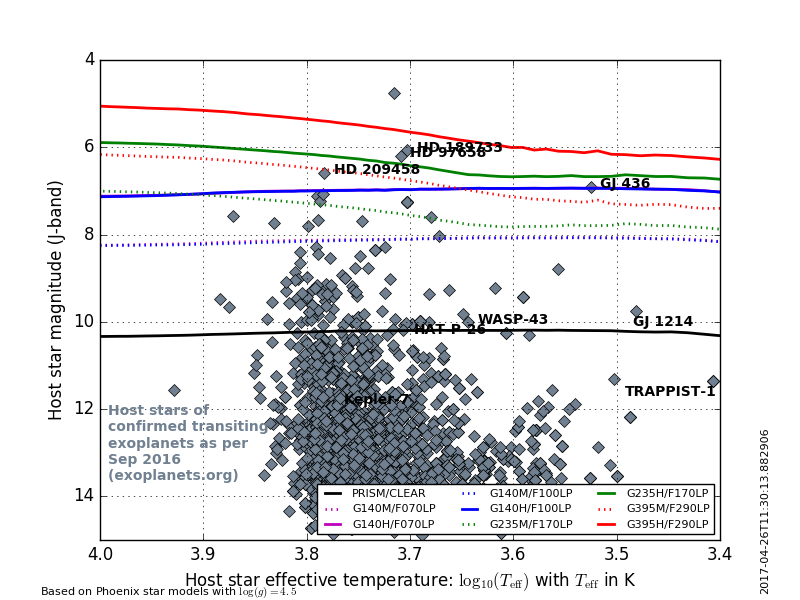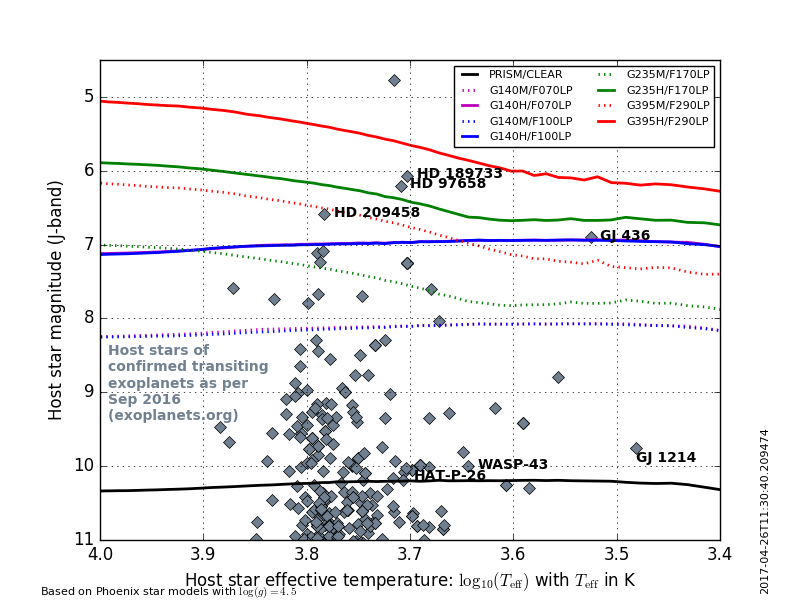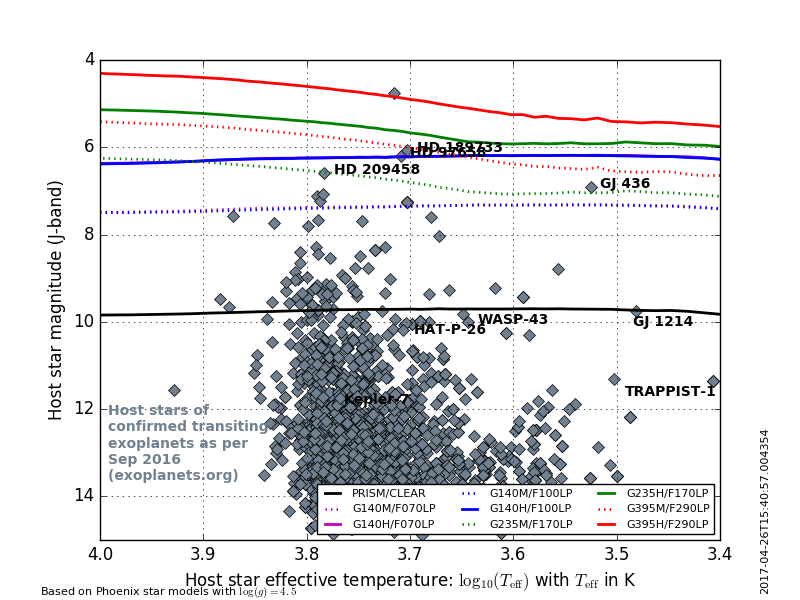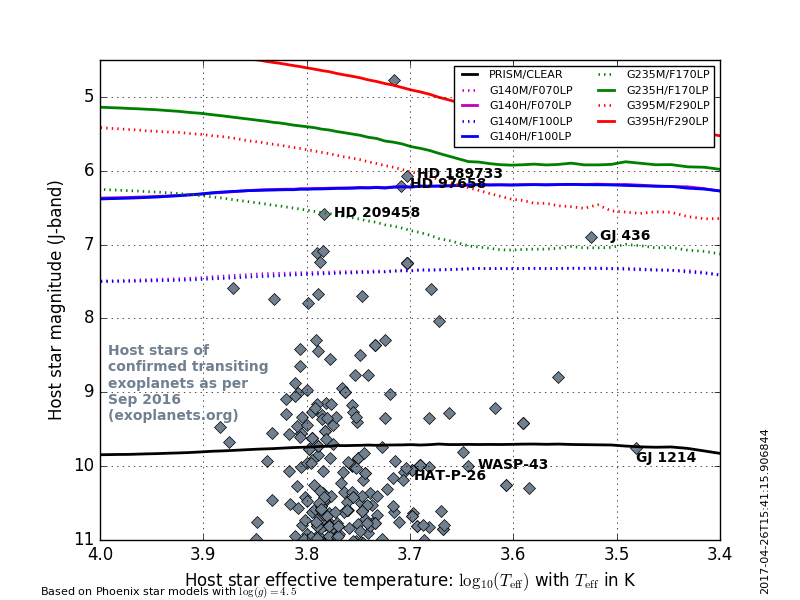Brightness limits - JWST NIRSpec
BRIGHTNESS limits
Based on the limiting fluxes we have calculated the magnitude limits for a range of host star temperatures/spectral types based on the Phoenix models computed by France Allard and collaborators and that are also used by the STScI JWST Exposure Time Calculator. We used the spectra of the models with solar metallicity and log g = 4.5 and the resulting magnitude limits in J-band are shown in the plots below.
DISCLAIMER:
These calculations have about 20% uncertainty due to uncertainty in saturation limit and photon conversion efficiencies
 |
 |
| The J-band limiting magnitudes for the different NIRSpec modes as a function of host star temperature. The colored dashed lines are for the medium resolution gratings, the colored solid lines for the high resolution gratings, and the solid black line for the prism. Sources below the lines can be observed in the full wavelength, whereas targets above the line can still be observed but with partial saturation. The grey symbols denote host stars of known transiting exoplanets (data taken from exoplanets.org in September 2016). The plot on the right shows the magnitude limits for the gratings in more detail. The difference in shape between the curves is due to the combined effect of i) using J-band magnitudes as the reference, ii) the spectral resolution of NIRSpec, and iii) the spectral energy distribution of the stars. | |
Using smaller subarrays to push the brightness limits
The sub-array sizes given above provide full wavelength coverage for all the modes. If only partial wavelength coverage is required, smaller sub-arrays can be used. This will decrease the minimum integration time which will allow brigter targets to be observed, but parts of the spectrum will be truncated. The figures below have been cumputed with subarays half the size of the defaults, resulting in half the integration time. This yeilds about an extra 0.5 mag. However, as of today, there are very few systems with transiting exoplantes that are too bright to be observed with the NIRSpec gratings.
 |
 |
|
The J-band limiting magnitudes for the different NIRSpec modes when using non-default subarrays: for the PRISM S512S which is only 16 wide, as opossed to 32 for S512. This may cause truncate some of the PSF, resulting in additional systematic error especially under conditions of stellar jitter. The magnitude limits for the gratings have been computed for a 1024x32 subarray, which truncates the edges of the spectrum. The smaller non-default subarrays can be used to observe brighter targets, but at the expense of wavelength coverage. |
|
- Removed a total of (1) style text-align:center;
- Removed a total of (7) style text-align:justify;
- Removed a total of (2) align=center.
- Removed a total of (2) border attribute.
- Removed a total of (2) cellpadding attribute.
- Removed a total of (2) cellspacing attribute.








































 Sign in
Sign in
 Science & Technology
Science & Technology